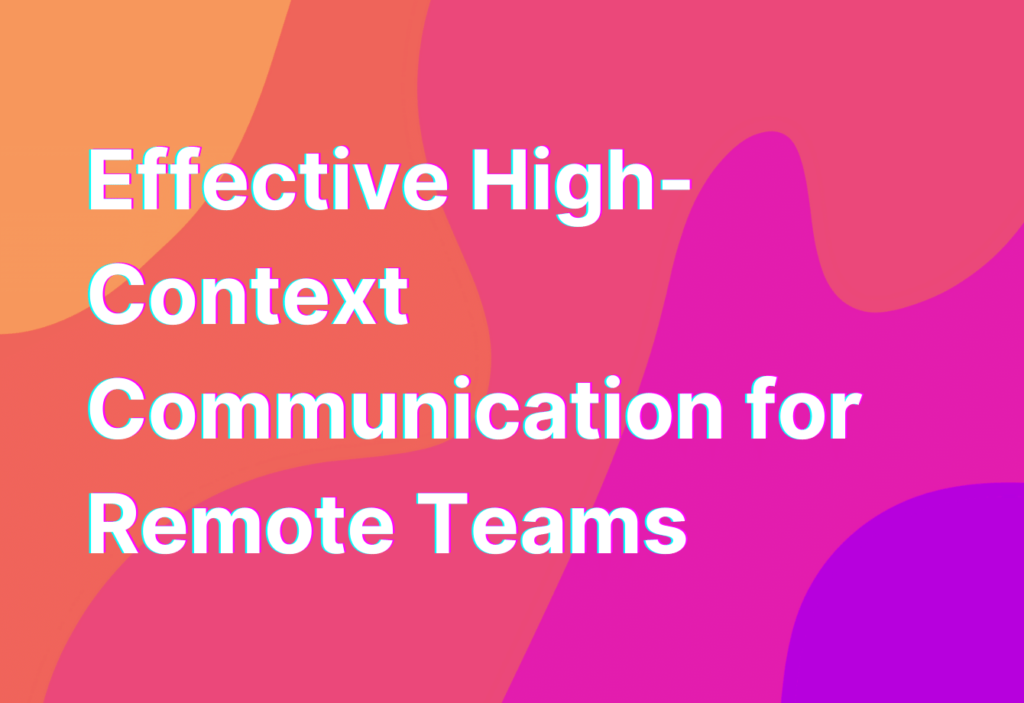Effective High-Context Communication for Remote Teams
Hey there, remote work enthusiasts! It’s Ashley here, your friendly remote work advocate with 10 years of experience in the tech industry. Today, I want to talk about a crucial aspect of remote team collaboration: high-context communication. So grab your favorite cup of coffee and let’s dive in!
What is High-Context Communication?
High-context communication refers to a style of communication where a significant amount of information is implied and understood through context, non-verbal cues, and shared experiences. In remote teams, where face-to-face interactions are limited, high-context communication becomes even more important to ensure effective collaboration.
Now, you might be wondering, “Ashley, how can we achieve high-context communication in a remote team?” Well, fret not! I’ve got some tips and tricks up my sleeve that will help you foster effective high-context communication within your remote team.
1. Build Trust and Relationships
Trust is the foundation of any successful remote team. When team members trust each other, they are more likely to rely on high-context communication. Encourage team bonding activities, such as virtual coffee breaks or team-building exercises, to foster relationships and build trust among team members.
Pro tip: Did you know that remote teams that have a strong sense of trust are 2.5 times more likely to be effective? Trust me, it’s true!
2. Embrace Video Conferencing
While high-context communication relies heavily on non-verbal cues, it can be challenging to convey those cues through text-based communication alone. That’s where video conferencing comes to the rescue! Encourage your team to turn on their cameras during meetings to enhance communication and build stronger connections.
Pro tip: If you’re feeling a bit camera-shy, start with small steps like turning on your camera during team check-ins or one-on-one meetings. You’ll get used to it in no time!
3. Leverage Visual Communication Tools
Visual communication tools, such as Trello or Miro, can be a game-changer for remote teams. These tools allow you to create visual representations of ideas, workflows, or project timelines, making it easier for team members to understand and contribute to the conversation.
Pro tip: Check out Trello for an intuitive and user-friendly visual collaboration experience. Trust me, you won’t be disappointed!
4. Encourage Active Listening
Active listening is a crucial skill for high-context communication. Encourage your team members to actively listen to each other, ask clarifying questions, and provide feedback. This will ensure that everyone is on the same page and minimize misunderstandings.
Pro tip: Did you know that active listening can improve team performance by up to 30%? So put those listening ears on and watch your team thrive!
5. Document and Share Knowledge
In a remote team, it’s essential to document and share knowledge to avoid information gaps. Create a centralized knowledge base or use collaboration tools like Google Docs to store important information, processes, and best practices. This way, team members can access the information they need, when they need it.
Pro tip: Looking for more tips on effective communication in remote teams? Check out this article on effective instant messaging for remote teams. It’s a must-read!
Wrapping Up
Effective high-context communication is the secret sauce to successful remote team collaboration. By building trust, embracing video conferencing, leveraging visual communication tools, encouraging active listening, and documenting knowledge, you’ll create an environment where your remote team can thrive.
Remember, remote work doesn’t have to be isolating. With the right communication strategies in place, you can foster strong connections and achieve great things together. So go ahead, put these tips into action, and watch your remote team soar!


